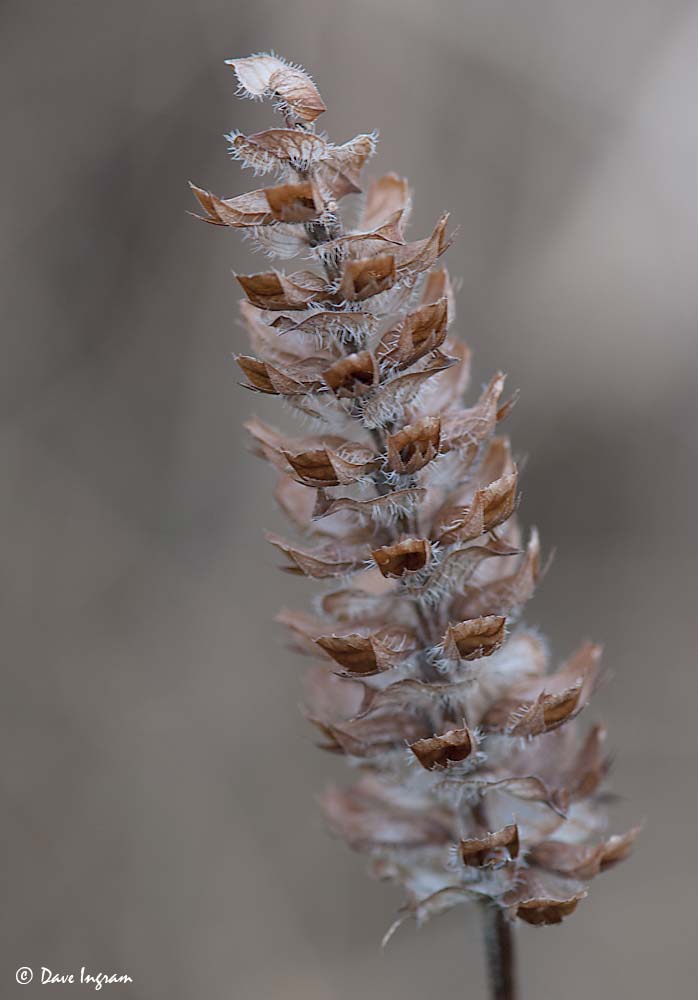One of the advantages of my workplace is that my schedule is fairly flexible and if there is a break in the wet west coast winter weather I can take a short walkabout and look for interesting plants, insects and birds. Since my office is out in the country I’ve got lots of farm fence line and rural roads to walk as well.
This week I needed a stretch and did a quick forty-five minute walk along a hedge row that borders the edge of a field. The ground here was fairly wet so I was glad that I was wearing boots. It’s been fairly grey and cloudy lately and at first I didn’t notice anything too interesting – no birds were active in the hawthorns and most of the plants had their winter branches on.

Often it is the obvious, but small, that attracts my attention. Such was the case with the old flower heads of Self-heal (Prunella vulgaris).
Initially these tired brown flower heads blended in with the pale dead grass and I missed them. Once I saw one, I realized that there were quite common. A closer look revealed that they were also quite interesting in appearance – I loved the dry papery texture and the bristly hairs on the lower lip of the old flowers.

Self-heal is an introduced plant from Eurasia (although there is apparently a native subspecies as well) and often grows in wet places on the edges of roads, fields and forest edges. The leaves are opposite (arranged in pairs) and relatively few on the stalk. I was able to find a few green leaves at the base of some of the plants.
The flower heads (when fresh) are a beautiful spike of purplish to pink flowers. As mentioned above, the middle lobe of the lower lip of the individual flowers is fringed with hairs.

Pojar and MacKinnon, in Plants of Coastal British Columbia, state that common names “self-heal”, “hook-heal” and “carpenter’s herb” come from the plant’s reputation for having healing qualities, especially for injuries from sharp edged tools. I can attest that after spending some time in the fresh winter air examining and photographing these old flower heads I definitely felt better!